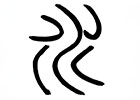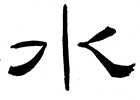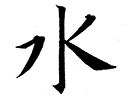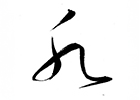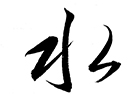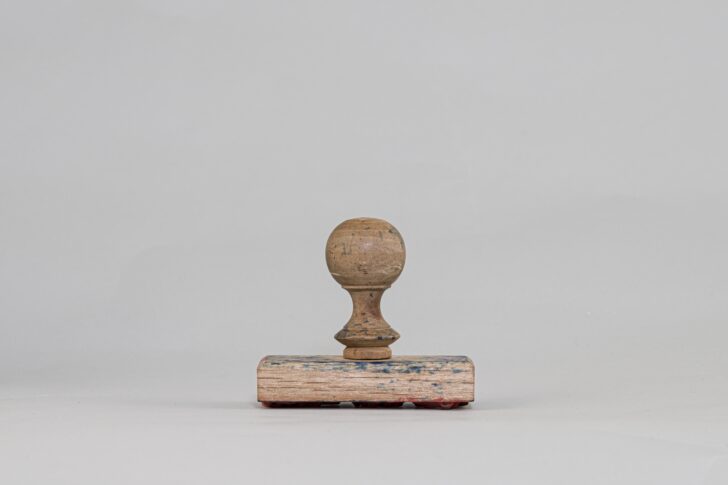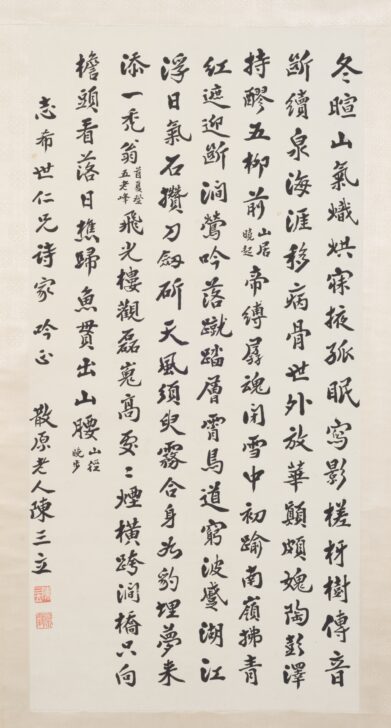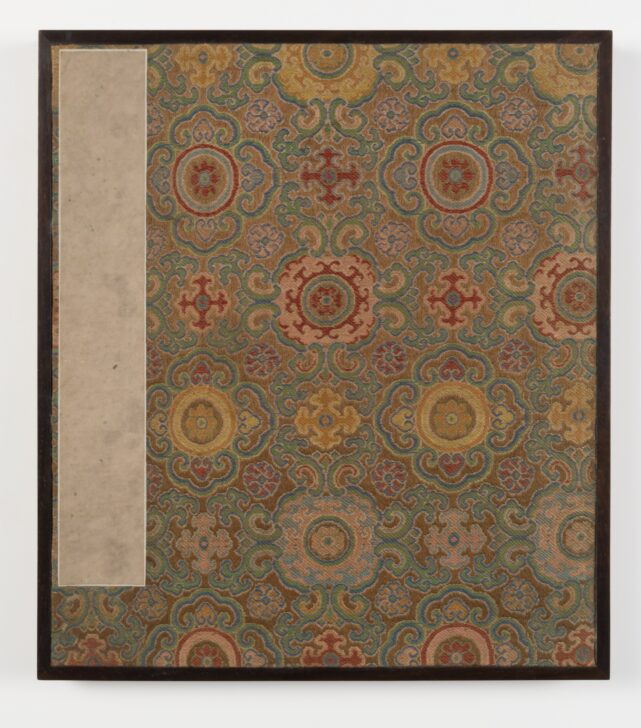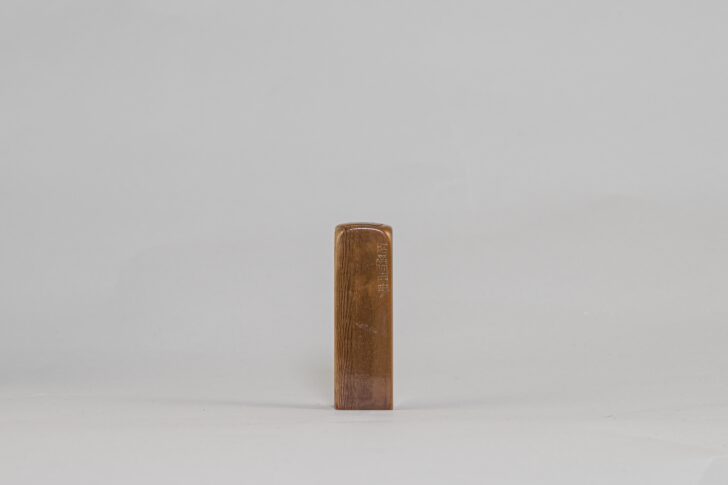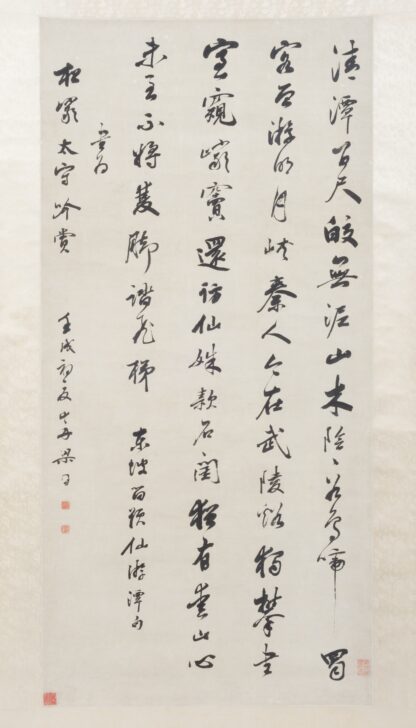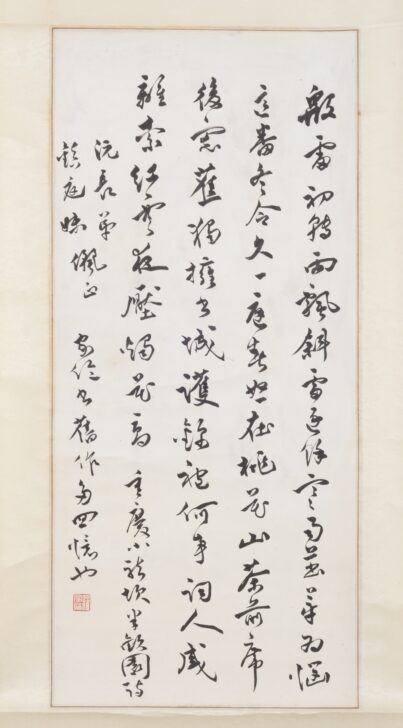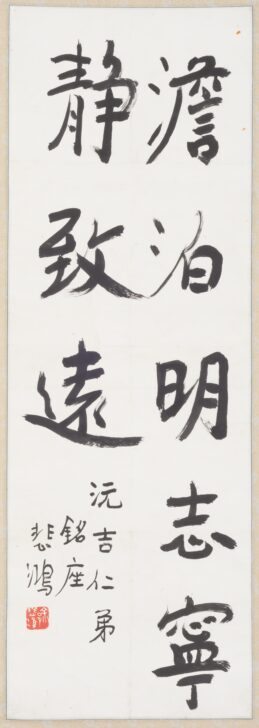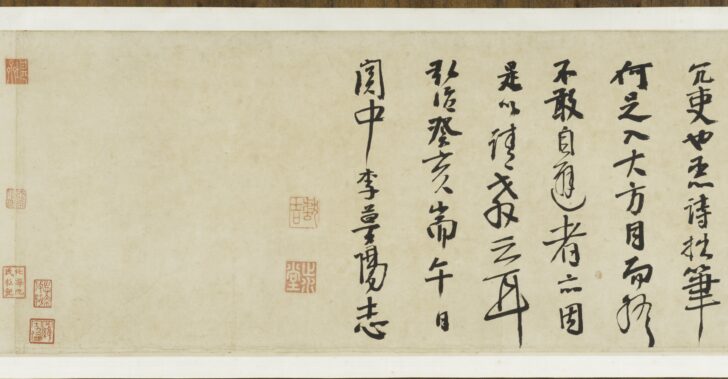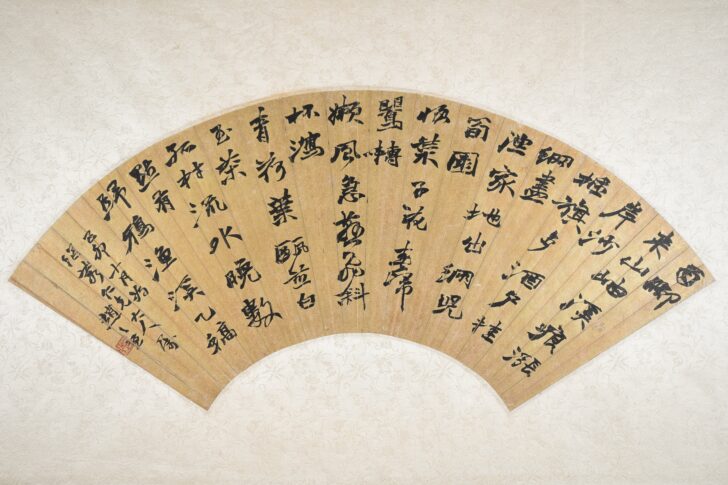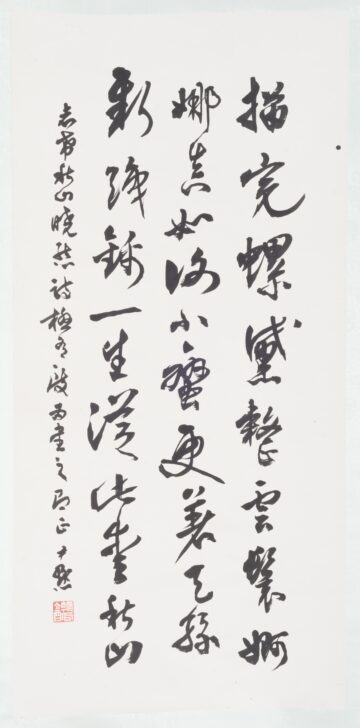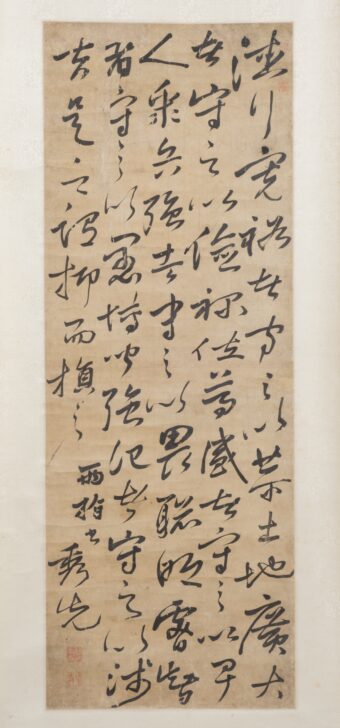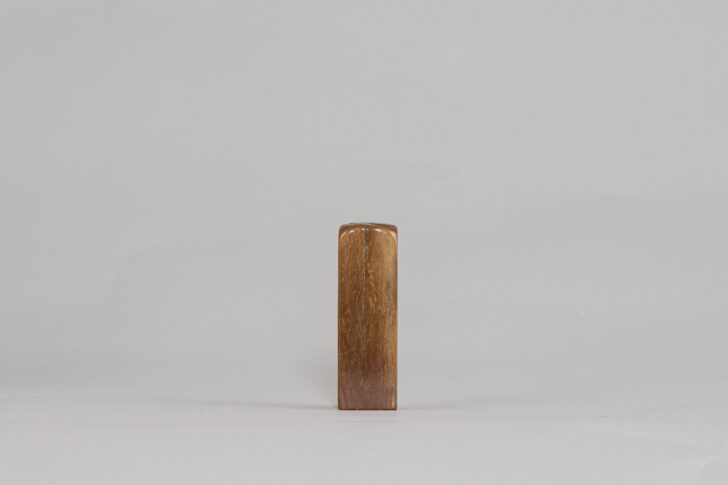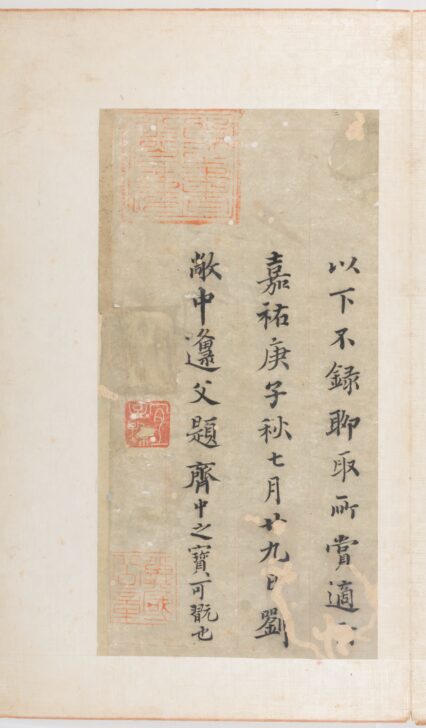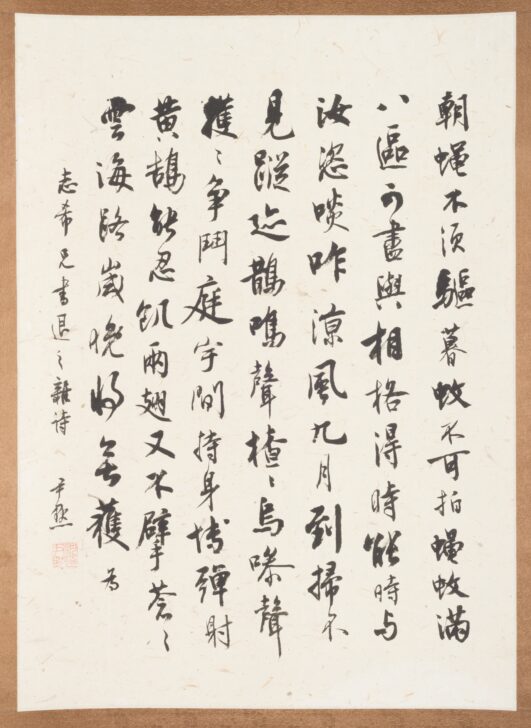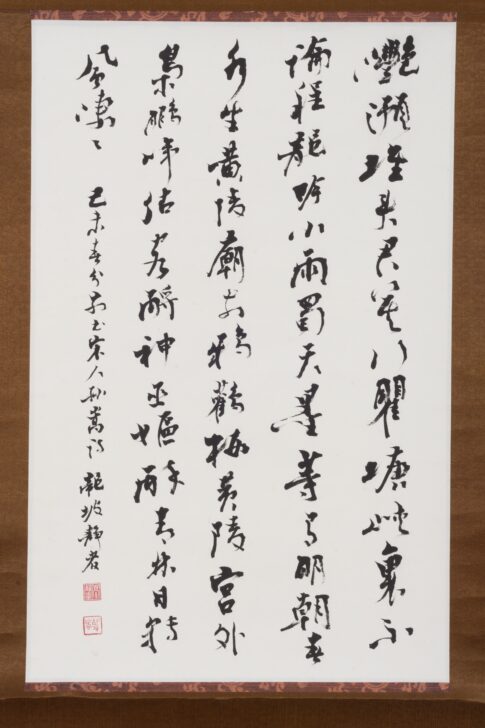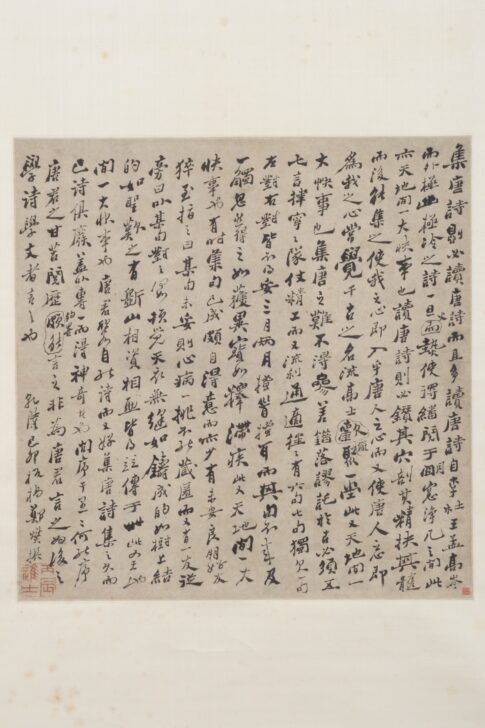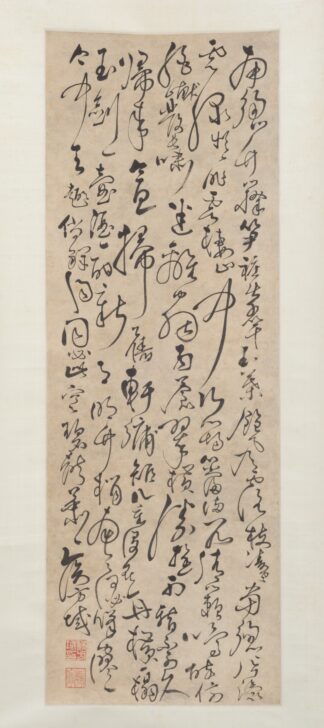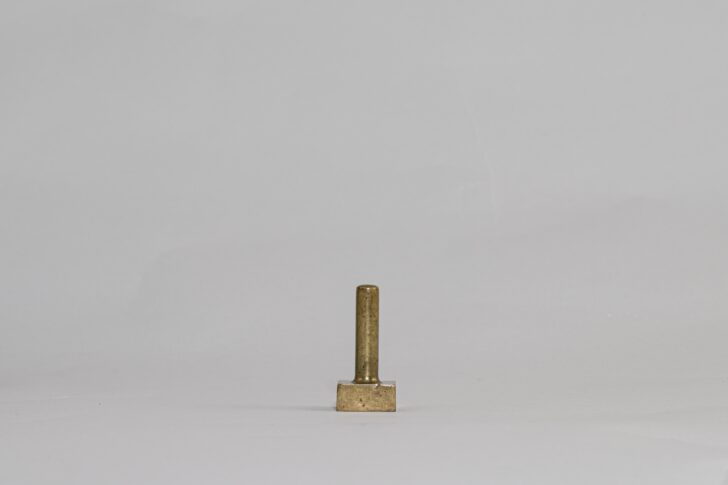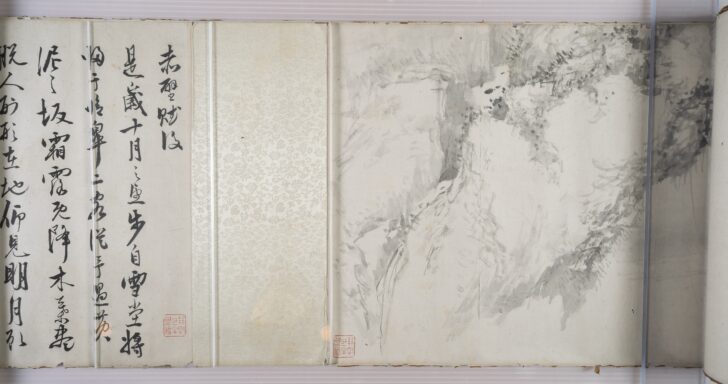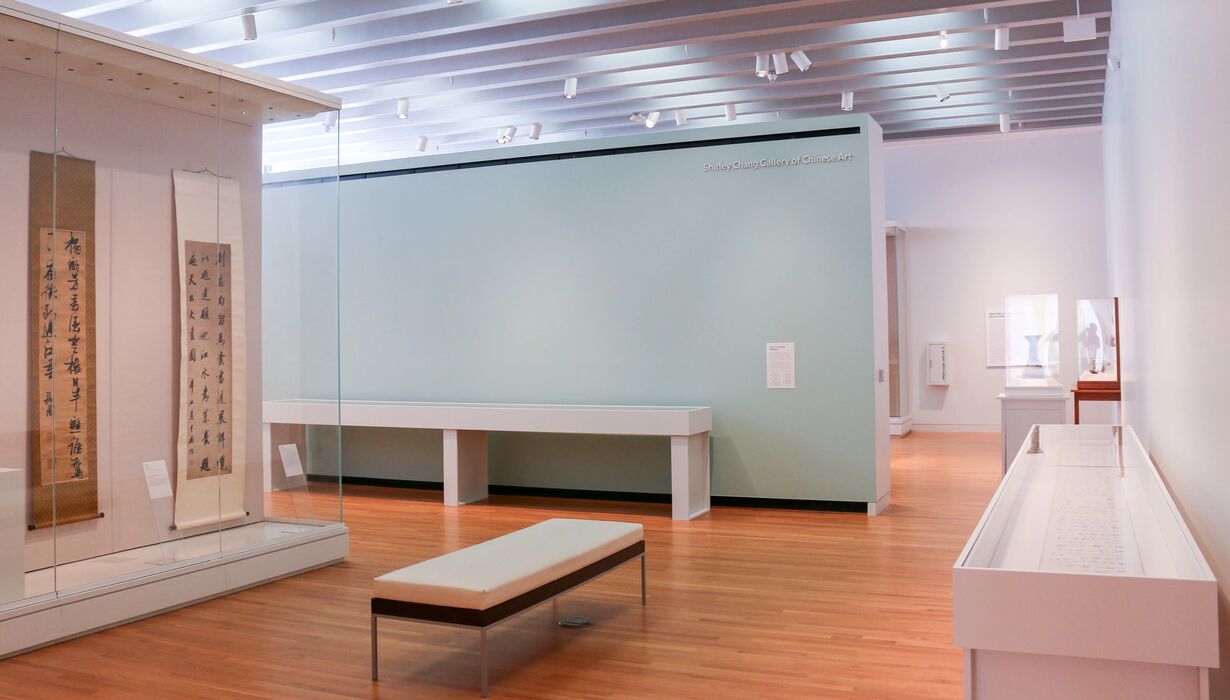
The Lo Chia-Lun Calligraphy Collection
Chinese Calligraphy AT UMMA
Gifted to UMMA in 2022, the Lo Chia-Lun Calligraphy Collection comprises 72 important works of art from six centuries of Chinese history and adds an impressive breadth of works to an already stellar collection of Chinese paintings and ceramics at UMMA.
It is the single most valuable gift of art in the University of Michigan’s history. The Lo Chia-Lun Calligraphy Collection is a gift of Jiu-Fong Lo Chang and Kuei-sheng Chang.
About the Collection
The collection, assembled by Lo Chia-Lun, includes artworks dating from the early fourteenth to the early twentieth century, as well as implements such as seals, ink cakes, and cinnabar pads. Most date to two crucial periods of political and socio-economic transition in China: the sixteenth to seventeenth century, and the twentieth century. In the last eighty years, the collection has traveled more than 10,000 miles with the Lo family, across China, Japan, India, Australia, and the United States.
The collection will contribute significantly to contemporary scholarship of from Yuan to Ming dynasty calligraphy and the study of Chinese cultural history. Highlights of the collection include masterpieces by Yang Weizhen (1296-1370), Wen Zhengming (1470-1559), Cai Yuanpei (1868-1940), Chen Duxiu (1879-1942), as well as later artists Xu Beihong (1895-1953) and Zhang Daqian (1899-1983).
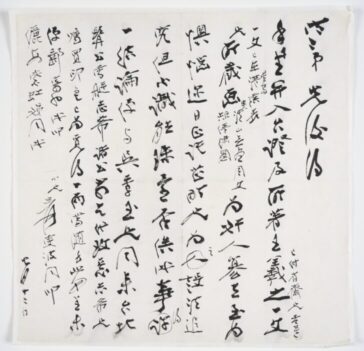
Now on View
To celebrate this transformative gift, selections from the Lo Chia-Lun Calligraphy Collection will be on display in UMMA’s Chinese gallery through 2024 and beyond.
Featured Objects Currently on View

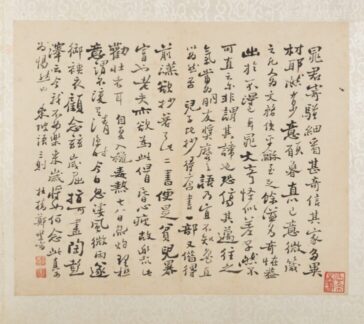

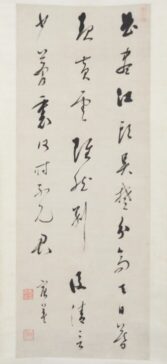
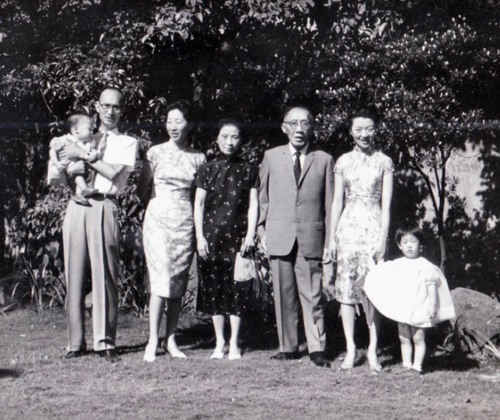
Meet the Lo Family
Lo Chia-Lun 羅家倫 (1897-1969) was a student leader in China’s “May Fourth Movement” and became a prominent government official in Nationalist China as well as a scholar, calligrapher, poet, and president of two major universities—National Central University and Tsinghua University.
This remarkable gift to UMMA builds upon the Lo family’s history of philanthropy, including previous gifts of Chinese art. “This gift honors not only the legacy of my father, but it also recognizes our family’s deep roots at Michigan and our gratitude for the opportunities U-M afforded us at a time when few Chinese students had the privilege of studying abroad,” said Jiu-Fong Lo Chang.
More From This Collection
See more objects from the Lo Chia-Lun Calligraphy collection. Objects shown here are part of the full collection but may not currently be on view.
